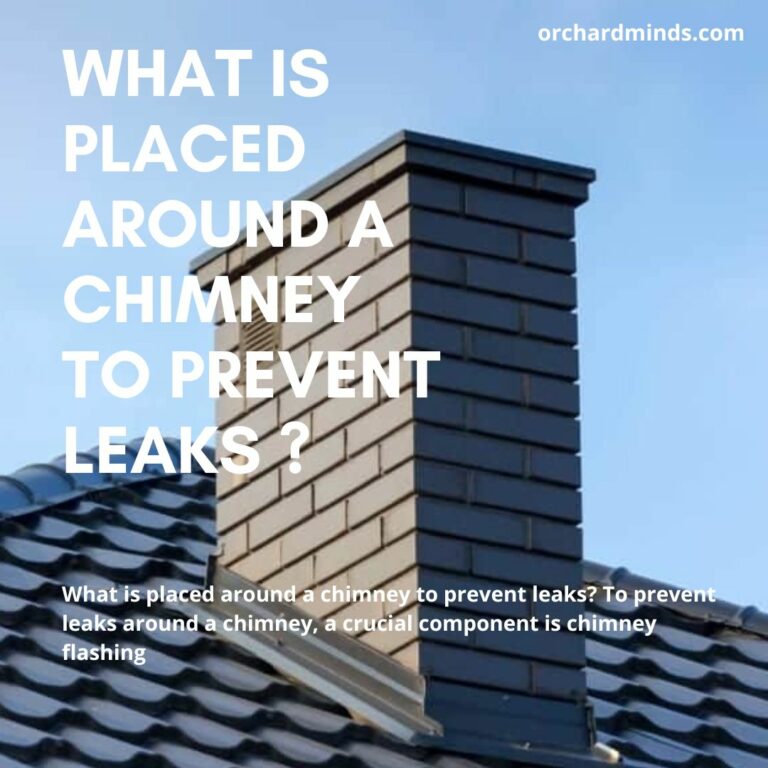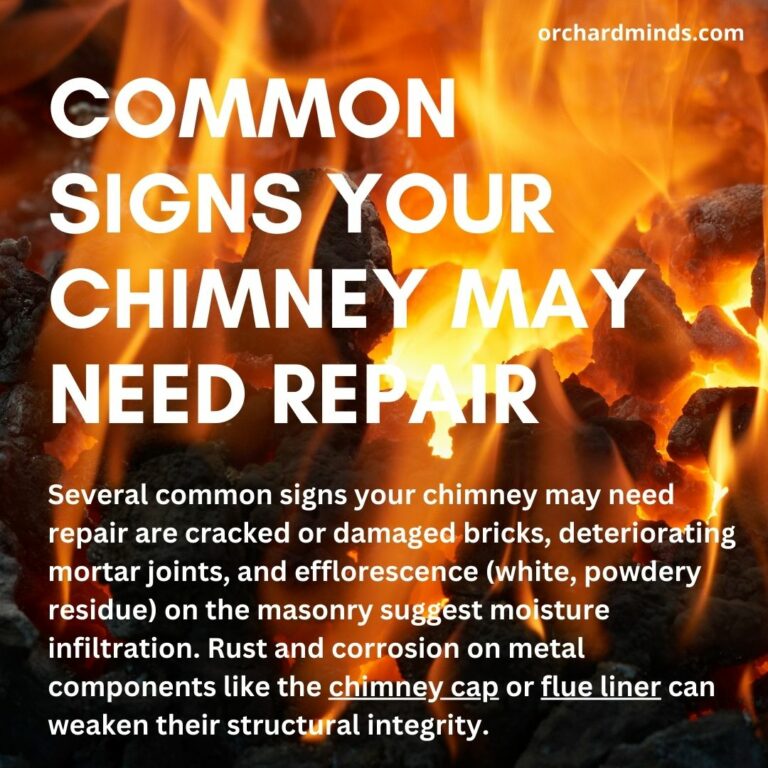Does Home Insurance Cover Chimney Damage? Quite often, yes, although coverage is variable and certain circumstances under which it applies may vary. Chimneys form an integral part of the structure of a home and can be susceptible to various forms of damage over time. We’ll explore in this article exactly what factors determine whether your home insurance would cover chimney damage, what kinds of damage are normally covered, and what you can do to make sure that your chimney is suitably protected.
Will Your Insurance Cover the Damages?
Whether insurance covers damages depends on a variety of factors, including what caused the damage, the terms of your policy, and whether you’ve maintained your property properly.
This is open to coverage in many instances under a standard homeowners insurance policy for damages caused by fires, storms, or even accidents. In this scenario, gradual deterioration and damage resulting from a lack of maintenance are not included. Someone should review the policy itself, understand the limitations, and consult an insurance provider on whether your source of damage is covered.
Can You Recover Your Losses?
Recovery from losses resulting from leakages, fires, or structural collapse is usually based on your insurance coverage. In brief, this overview includes:
Leaks
In most cases, insurance covers abrupt, accidental leakage, such as pipe bursts. Most policies do not give coverage to progressive damage due to wear and tear or poor maintenance. Review your policy for what is covered.
Fires
Many homeowners’ policies cover loss by fire, addressing damage to your property and personal belongings. Make sure you’re adequately covered to recoup any losses to the fullest degree possible in the event of a fire.
Collapse That can be covered, but it depends on the cause. If caused by a covered peril—storm or explosion, for example,—your insurance shall provide insurance coverage. However, collapses that result from poor maintenance may not, in general, be covered.
Taking Care of the Necessary Repairs
As far as home repairs are concerned, timing is essential. You may well be creating bigger and more costly problems for the future if you put off the necessary repairs. Problems such as repair of a leaking roof, plumbing issues, and repair of damaged foundation require attention before the onset of further damages. This will ensure that your home remains both secure and valuable.
Common Signs of Chimney Masonry Damage and How to Spot Them
Chimneys are not only functioning but also beautiful features for truly many homes. The masonry that makes up the chimney itself, though, deteriorates over time, mostly from being constantly exposed to the weather and other natural elements. It is important to notice signs that would tell you if your chimney masonry is damaged so as to be entirely safe and good-looking. Here are some common indicators to watch out for:
Cracked Bricks or Mortar: Cracks in the bricks themselves, or in the mortar joints holding them together, are perhaps a most common visible sign of masonry damage. Water can seep into these cracks and cause further deterioration.
Spalling Bricks: Subsequently, the flaking or chipping of the surface of a brick is considered spalling. This is mostly due to freeze-thaw cycles and water absorption causing possible weakening of its structure.
Efflorescence: This is the chalky, white salt deposits that accumulate on masonry surfaces and are created by water and salt. It becomes a sign or indicator of infiltration of water and can point out more serious issues with water.
Leaking/Water Stains: Interior water damage around the chimney is likely to indicate intrusion. This could be due to masonry damage or flashing problems with your chimney. Cracked Crown: The crown of a chimney refers to the top portion that is formed from concrete or mortar. More water makes way into the chimney and its interior is susceptible to damage.
Damaged Flue Liner: At times, if you notice tile or clay pieces in your fireplace or stove, then there could be a damaged flue liner. Having a damaged liner is extremely perilous because it may permit heat and other gases from combustion to reach into the house framework.
Chimney Repair vs. Replacement: How to Know What’s Right for Your Home
Chimneys, thus, play a vital role in your home’s heating, ventilation, and general safety.
Consider how bad the damage may be, whether it’s structural damage, leaking, or other creosote buildup, the age of your chimney, and recommendations by an experienced professional chimney sweep when you want to make the proper decision as regards chimney repair versus replacement. If the damage is great or there is extensive settlement, sometimes chimney repairs can give years of additional life, but replacement may be the safer and most cost-effective option in the long run. It is always wise to consult a chimney expert to make sure your decision aligns best with your home’s specific needs.
Why You Should Never Do Chimney Masonry on Your Own
A do-it-yourself chimney masonry project comes under extreme sports, and most definitely not recommended. Chimneys play an important part in keeping your home safe and operative. Their construction, together with repairs, requires special kinds of knowledge and skills. Most DYI tries are targeted without specialty expertise regarding structural integrity and safety that could cause a chimney fire, gas leakage, or even structure collapse. Only professionals will be in a position to render an accurate assessment and make any required chimney repairs or rebuilds using the proper equipment and according to local building codes following all the safety criteria to the letter. This makes therefore, critical that you leave the chimney masonry work strictly to professionals if you want to ensure the safety of your home and have peace of mind.
Everything You Need to Know About Chimney Cap Installation
A chimney cap installation is part of essential chimney maintenance. Chimney caps do a lot, from keeping unwanted things—like debris and crawlers of all kinds—out of your chimney to protection against water damage and improving safety by reducing the risks of chimney fires. Proper cap installation will add years to your chimney and significantly lower long-term repair costs.
Summer Months are Best for Chimney Work
Yes, the summer creates the best time for chimney work to be done. With the heating load significantly reduced during the summer, chimney experts are less busy. Probably most important is the ability to actually get it on their schedule for inspections and repairs. Warm weather allows any repairs or maintenance to be carried out without the added complications of winter weather. This is, in fact, quite an opportune time to take care of chimney problems before the heating season has set in.
Prefab Chimney Chase Cover Installation
Prefabricated chimney chase covers are of utmost importance in factory-built or prefab chimneys. They are designed to protect the chimney chase—namely, the exterior structure surrounding the chimney flue. Proper fit and appropriate securing of the chase cover is important to ensure that moisture is kept out, animals do not get in, and structural damage is minimized, so your prefab chimney will serve you longer and at its fullest potential.
How a Leaning Chimney Could Be Related to Foundation Problems
A chimney that is leaning is one of the sure indications that lurking somewhere are very serious foundation problems. Shifting soil and settlement, even foundation settlement, are some of the many symptoms that make your chimney start to lean or detach from its home. All these can lead to structural failure and more damage if not corrected and repaired on time.
It is important to have a professional consult with respect to the chimney itself and the foundation to be able to ascertain the problem extent and repairs that are to be done.
What is a Fireplace Firebox?
The fireplace firebox is that an area inside the chimney enclosed by the actual flames. It’s typically made of refractory bricks or high-temperature-resistant panels. The firebox is where firewood or any other burning fuel is put, which holds the fire in safe conditions, conducts the smoke up the chimney flue, and provides free-burning, radiant heat into the building. Maintaining a firebox properly includes routine cleaning and an inspection to ensure both safe and efficient fireplace operation.
Roof Rust and Your Chimney
The majority of rust on your roof seems to occur from metal flashing or certain chimney caps and can no doubt have a serious impact on your chimney’s health. Damages in rusty metal parts may grow to leaks, deterioration in chimneys, and probably become a permanent reason for a risky and costly repair. Regular checking of your roof as well as structural chimney elements may allow for the timely detection of rusty damage and its repairment or replacement in its initial stages. Preventative work will extend the life of the flue system and help save remaining water damage from occurring in your home.
Some of the more common factors that influence your home insurance coverage for chimney damage include the cause of the said damage, the policy terms, and how well the chimney has been maintained. Inasmuch as many policies generally cater to some forms of damage caused on the chimney, such as that related to fires or storms, it’s always wise to go through your policy jar in detail and consult with your insurance company about specific provisions of your coverage. Regular maintenance and quick attention to issues that arise with your chimney will keep it in good working order and prevent any catastrophe in case of sudden damage.




1 Comment